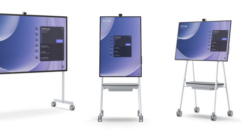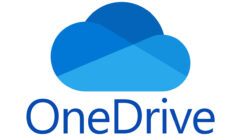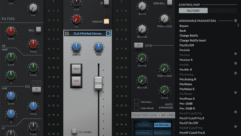
Can Microsoft Surface Pro, the Xbox 360, and Xbox Music Reinvent Music Enjoyment in the Connected Home?
Jan 22, 2013 5:15 PM,
By Jason Bovberg

Microsoft Surface
In this space, I’ve talked many times about my music enjoyment woes. In “What Happened to the Music?” I lamented the fact that a pure musical experience in the living room might soon be a thing of the past, thanks to the inevitable demise of high-definition physical media and the rise of low-def MP3s. And in “3 Ways to Stream Whole-house Audio from the Cloud,” I wrote about how to take advantage of a new digital music future, but I’ve never been entirely comfortable with this future of music.
Despite the ubiquity of the iPod and iTunes, I’ve never fully bought into Apple’s hold on the digital music scene. Sure, we’ve had several iPods—many versions, in fact—in our house, and they’re great little devices. We all have our separate iTunes accounts, and I try valiantly to keep everyone’s account updated with cover art and accurate album information, but in our Windows-centric connected home, iTunes is notoriously buggy. The latest version of iTunes is a step backward in usability, doing away with the snazzy cover flow and introducing a new bug that won’t display some downloaded cover art. I find myself spending far too much time tinkering with separate iTunes accounts that don’t play well with Windows 7, the OS that’s more omnipresent throughout our house.
We’ve had this disconnect in the music component of our connected home for years—ever since the first iPod entered our home. We have excellent individual devices with which to enjoy our music, but the software back end is terrible with no sense of convergence, automation, or coherence.
The situation would be different if ours was an Apple household, of course. Apple TV and Apple Airport Express would let me implement a whole-house audio solution that we could enjoy through our iPods, an iPad (should we choose to invest in one of those), and could connect to our existing living room AV implementation. And this is a viable solution for those types of connected homes, for sure, as is Apple’s Airplay. Some third-party AV receivers even offer Airplay connectivity built-in. But as much as people love Apple gadgets, the Apple whole-home back end isn’t catching on in a big way. In my home, it will never catch on.

Will the new Xbox Music platform combined with the Windows Phone and the Microsoft Surface be enough to turn the tide for a new future for Microsoft?
In the eyes of many (including me), there are disadvantages to the otherwise elegant Apple way of things. Foremost is the proprietary nature of the ecosystem. From its annoying Apple-only, non-USB dock connector to its play-in-our-gated-sandbox iOS sensibility, Apple is increasingly out of sync with a future that seems to prefer the innovation instilled by third-party collaboration and creativity. Supporting this notion is the fact that the once vaunted iPhone has been lagging behind its competitors for some time now, positioned mainly against an open-standard mobile OS—Google Android—that invites and celebrates innovation from all corners rather than only from within. Plus, let’s face it: Implementing a large-scale Apple ecosystem is an expensive proposition!
What percent of connected homes actually have an Apple backbone? What percent can even foresee that scenario given the shifting fortunes of a Jobs-less Apple and an ever-more-populated tablet/mobile landscape? And, given that Google has no real-media-backbone capabilities, where does that leave Microsoft, which historically has suffered in its home-entertainment efforts? Remember that Microsoft historically has had a stranglehold on the home PC market (although the era of the PC is in jeopardy), and more recently the Xbox 360 has had a lock on the home gaming world. What is the tech world today pointing to?
Microsoft hopes that it’s pointing back at a Windows-focused future, but that’s a tough prospect in a world that in many ways believes it is moving forward from a traditional Microsoft-focused past. “Microsoft” and “Windows” have become negative buzzwords in many quarters. Is that poised to change?
Has Microsoft redefined itself enough over the past year to take advantage of what I see as a significant opening in digital home entertainment? More important, perhaps, is that Microsoft has, until now, been very slow to adapt to a new tech reality, coming up with MP3 players and phones and even tablets. Although some might argue that the company was first in this area, with products that no one wanted—yet.
But now the scene is abruptly different. Having released its iPad competitor—the Surface RT—last fall, Microsoft announced its sudden presence in the touchscreen arena, and simultaneously, the company radically reengineered its base Windows OS to take advantage of those new kinds of display hardware. Also at the same time, it revamped its struggling phone offering with Windows Phone 8. (I still think it should be called Xphone to piggyback the Xbox brand.) And speaking of the Xbox, Microsoft has recognized the market superiority of that platform and given the brand to a new music service, Xbox Music, which promises to offer an iTunes alternative for the Windows environment.
The market has evolved since my November column “The Ultimate Connected Home with Windows 8, Microsoft Surface, and Windows Phone 8.” Now we’re on the brink of Microsoft’s most eagerly awaited product in years: the Surface Pro tablet, which runs the full Windows 8 OS and brings to the table something that we haven’t seen before—a powerful productive PC that doubles as a media-consumption tablet device. The Surface Pro is due on the market Feb. 9.
Combined with Xbox Music, the Surface (both RT and Pro) and Windows Phone offer an interesting opportunity in those homes that have a Microsoft back end. And those homes are still in the majority, with an overwhelming number still entrenched in Microsoft technology and quite happy with it. It has historically been their tried-and-true productivity solution, and now it is about to become an entertainment solution as well.
In the coming weeks and months, I’m reinventing my music environment in my connected home. I’ll be incorporating all these new technologies and reporting back on my successes and failures.
The basics are this: I’ll be standardizing on Xbox Music—at long last, moving away from iTunes—and making our entire music collection redundant in Microsoft SkyDrive. My wife and I will be shifting away from our aging iPods and using our phones as our primary interfaces for mobile music. Thus, Windows Phone will host our music on the run, and I’ll put aside my iPod Touch. And most important, I’ll be using a Surface Pro tablet for whole-house control of all our music, which will be stored on our main system downstairs as well as backed up to SkyDrive. While I experiment and play I want to hear your stories. Keep in touch!










